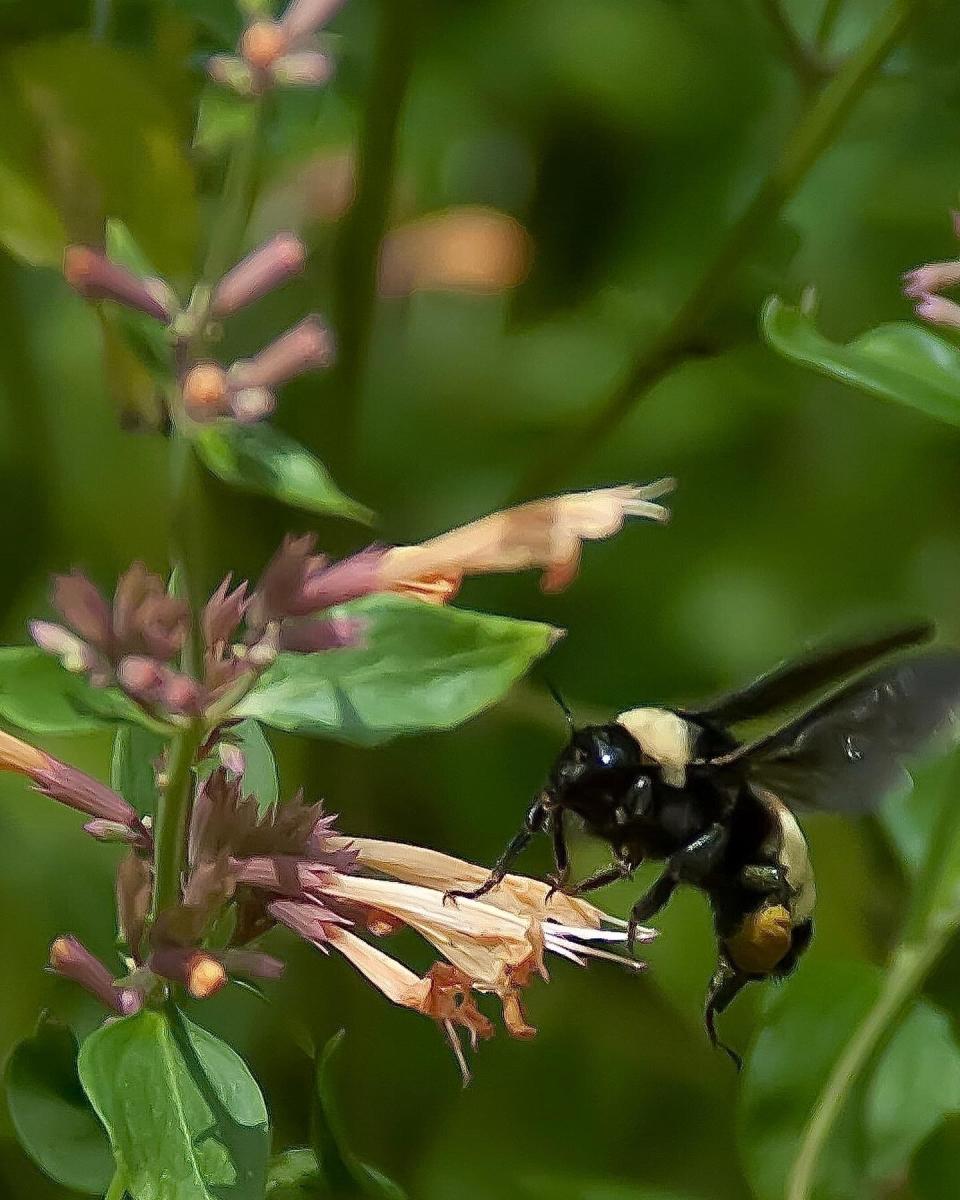Master Gardener: Dealing with warm winter days and green popping up from the ground
Gardeners are concerned that spring-blooming bulbs of daffodils, tulips, hyacinths and crocuses that started sprouting recently are now facing freezing weather.
When temperatures rise above 40 degrees, spring-blooming bulbs will break dormancy and start growing. If they haven’t started to bloom, they will survive the coming winter temperatures.
The green leaves that are poking out now may suffer from lower temperatures, but the bulbs are still providing nutrition for the colorful flowers that will bloom in the spring.
You can provide a mulch covering to protect these early growers, but it isn’t necessary. If there are buds, they will freeze. The bulb will not die but may not bloom this year.
As gardeners, we realize the winter weather has changed over the years and the temperature affects us as well as our plants. Low temperatures during the winter are a crucial factor for the survival of plants.
Therefore, it is important to know our planting zone to ensure which plants will thrive in our area.

New Plant Hardiness Zones
The U.S. Department of Agriculture released a new version of its Plant Hardiness Zone Map in November.
Map developers cautioned against attributing global climate to changes in some zones because the data logs the average lowest temperature for a 30-year period.
The growing zones are numbered from 1, being the coldest average winter temperature, through 13, being the warmest average winter temperature.
Each zone has been divided into half zones reflecting a 10-degree difference from each other.
Ohio consists of four hardiness zones: 5b, 6a, 6b, and 7a.
Local counties still in Zone 6a, 6b
Sandusky and Ottawa counties remain unchanged in zones 6a, averaging minus 10 degrees to minus 5 degrees, and 6b, averaging minus 5 degrees to 0 degrees, with Lake Erie Islands like Put-in Bay and Middle Bass in zone 7a (0 degrees to 5 degrees).
The Lake Erie Islands were previously in Zone 6b. This change is due to milder average winter temperatures.
Planning your garden
If you are new to gardening, or someone who is aways looking to change things in your garden and landscape, then this is the time of year to start planning. During winter months, gardeners will be looking at catalogs to determine their choices for spring planting.
Experienced gardeners have learned soil type, amount or sun or shade, temperature and access to water are keys to successful gardens.

Keeping that in mind, they will look at catalogs to see what is new or “tried and true” that will work in their gardens.
Choices will range between annuals, perennials and biennials based on their landscape and gardening needs.
Annuals provide color as a garden border, in containers and hanging baskets, or even for cutting gardens. A cutting garden provides flowers and foliage for you to cut and bring indoors or to share with friends. At the end of the season, annuals will die and can be placed on the compost pile.
Perennials bloom for multiple growing seasons but die back above ground in the fall and grow again the next year.
A third category is called biennial, which requires two growing seasons; roots, stems, and leaves are produced the first year, while flowers, fruits, and seeds are produced the second year. At the end of the second year, the plant dies and can be placed on the compost pile.
You can mix the three growing types for their presentation of color, shape and texture. You can change your choice of annuals the next year for a different effect.
Proven Winners plants of the year 2024
Well-known commercial grower Proven Winners announced its new introductions for 2024. The PW brand boasts its plants are “often more resistant to disease and insect pests, have better heat and humidity tolerance,” because they have undergone vigorous selection trials.
Proven Winners only sells plants though nurseries and garden centers; you are unable to buy seed.
Here are the PW Plants of the Year for 2024:
Annuals: The Supertunia Vista Jazzberry petunia has a bright purple flower, is heat- and drought-tolerant and does not require dead-heading. Dead-heading is the removal of spent blooms to encourage the plant to continue blooming.
Perennial: Pink Profusion Perennial Salvia produces dark pink flowers in late spring and early summer. It is deer- and rabbit-resistant.
Caladium: Lemon Blush Shade is a new look in fancy-leaved caladiums. It has a rose-red center and a wide chartreuse margin. This is a partly-shade to shade plant. Caladium is grown from a bulb or corm which must be stored over winter.
Hosta: Shadowland Hudson Bay Hosta hybrid has attractive tricolor leaves with a wide, bright blue margin, apple green jetting and creamy white center. They are slug-resistant.
Landscape perennial: Storm Cloud Bluestar Amsonia tabernaemontana is low-maintenance, heat-tolerant and deer-resistant. With silver-veined olive-green leaves, it produces star-shaped, periwinkle blue flowers.
Flowering shrub: Wine and Spirits Weigela Florida has dark purplish-black foliage with crisp white-green flowers. It does well in full sun and attracts hummingbirds, butterflies and bees.
Christine Michael is a Master Gardener with the Sandusky and Ottawa County Ohio State University Extension Offices.
This article originally appeared on Fremont News-Messenger: Master Gardener: Do not fear when bulbs peak out in winter

